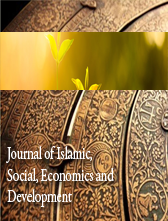HIERARCHICAL RELATIONSHIPS AND MICMAC ANALYSIS STRATEGY IMPLEMENTATION OF GLOBAL LEADERSHIP COMPETENCY USING INTERPRETIVE STRUCTURAL MODELLING
Abstract
The complex and emergent globalization demand current and future public sector educational leaders to lead with different set of skills and competencies. However, domestic leadership competency is inadequate for public sector educational leaders to meet the challenges of global trend. Public education sector should adopt global leadership competency and assimilate it in the leadership competency training and development to enhance leadership performance. Thus, the central aim of the study is to investigate and examine the strategy implementation of global leadership competencies in the training and development of public sector educational leaders leading the education system. The paper analyses the strategy implementation of global leadership competency training and development by using Interpretive Structural Modelling (ISM). ISM utilizes a systems approach to decision-making by experts’ consensus. The driving and dependence power of each strategy implementation was ascertained and classified based on cross-impact matrix multiplication applied to classification (MICMAC) analysis. The hierarchical model developed through ISM yielded 20 strategy implementation and compartmentalized into pre, while and post-programme for educational leaders’ global leadership competency training and development. The model proposed could be used for stakeholders and decisions makers to prepare and develop educational leaders’ competency upskilling to be on par with global trend.













